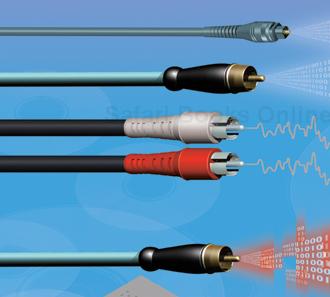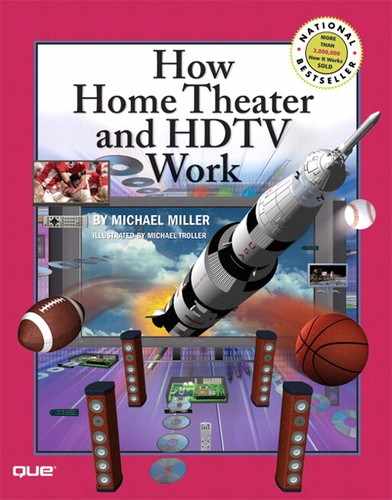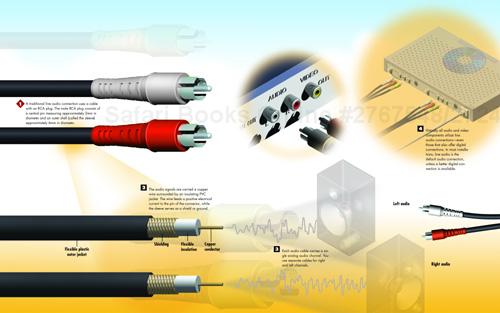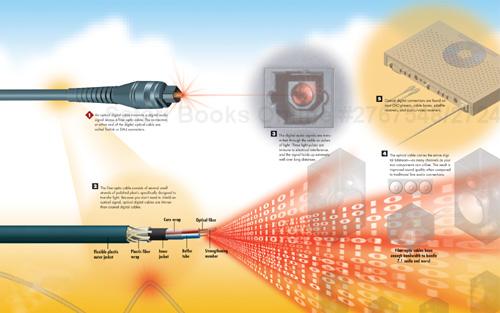
Audio connections aren’t quite as complex as video connections because audio signals are easier to transmit than video signals—sort of. After all, for decades we only had to deal with two channels of audio: right and left. What could be simpler than that? (Well, monophonic audio, of course, but we haven’t had that since the 1950s....)
With the advent of surround sound, however, the audio situation became more complex. All of a sudden there developed the need to transmit six or more channels of audio. How to do it?
The simplest solution was to simply add four more RCA audio connections. And, in fact, that’s how early surround sound components were connected—with multiple RCA audio cables. That worked, but it wasn’t very efficient.
It also wasn’t the best possible quality. That’s because traditional RCA audio cables carry analog audio signals, and analog signals aren’t as good as digital signals. And, after all, Dolby Digital Surround Sound is digital to start with—why move back into the analog world when you have to connect two components?
The solution to this situation was the invention of the digital audio connection, sometimes called an S/PDIF connection (for Sony/Philips Digital Interface). This is a single cable that can carry multiple channels of audio in pure digital form—very efficient, and very high quality. Today we have two types of digital audio cables to choose from: coaxial and optical. Both offer similar sound quality, but each has its pros and cons. It’s hard to go wrong with either one, though.
In addition, the new HDMI connection covered in Chapter 20 “How Video Cables Work,” is capable of carrying both digital video and audio. If you connect your components via HDMI, you don’t need to make a separate audio connection—it’s all there in the single HDMI cable. Just connect the HDMI cable to your A/V receiver; the video will be passed through to your television set, and the receiver will process the digital surround sound audio.
Using HDMI is just an option with today’s high–end audio/video equipment, but it will be required to carry the digital surround–sound audio from new high–definition DVD formats. Dolby Digital TrueHD and DTS HD use higher bit rates than standard Dolby Digital and DTS, and today’s optical and coaxial digital cables don’t have enough bandwidth for these future surround–sound standards. (S/PDIF has a data transfer rate of 1.5MB per second, whereas HDMI transfers data at a blazing 5GB per second!) For this reason, HDMI will be the connection of choice for both Blu–ray Disc and HD DVD players.




